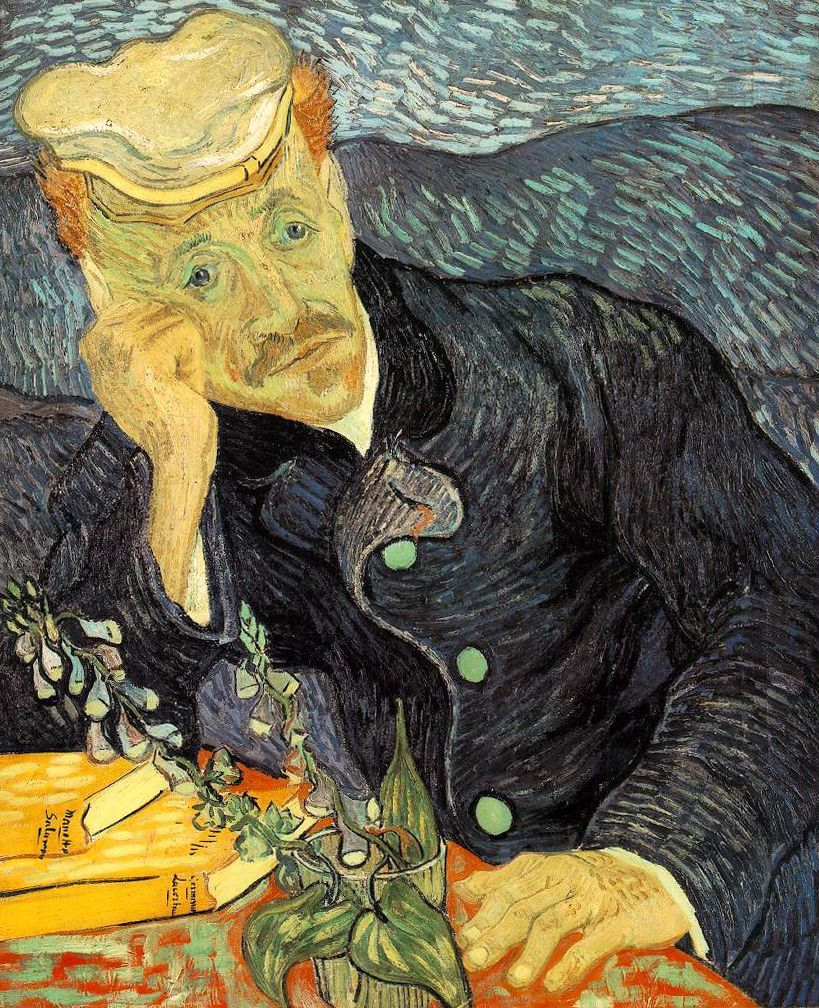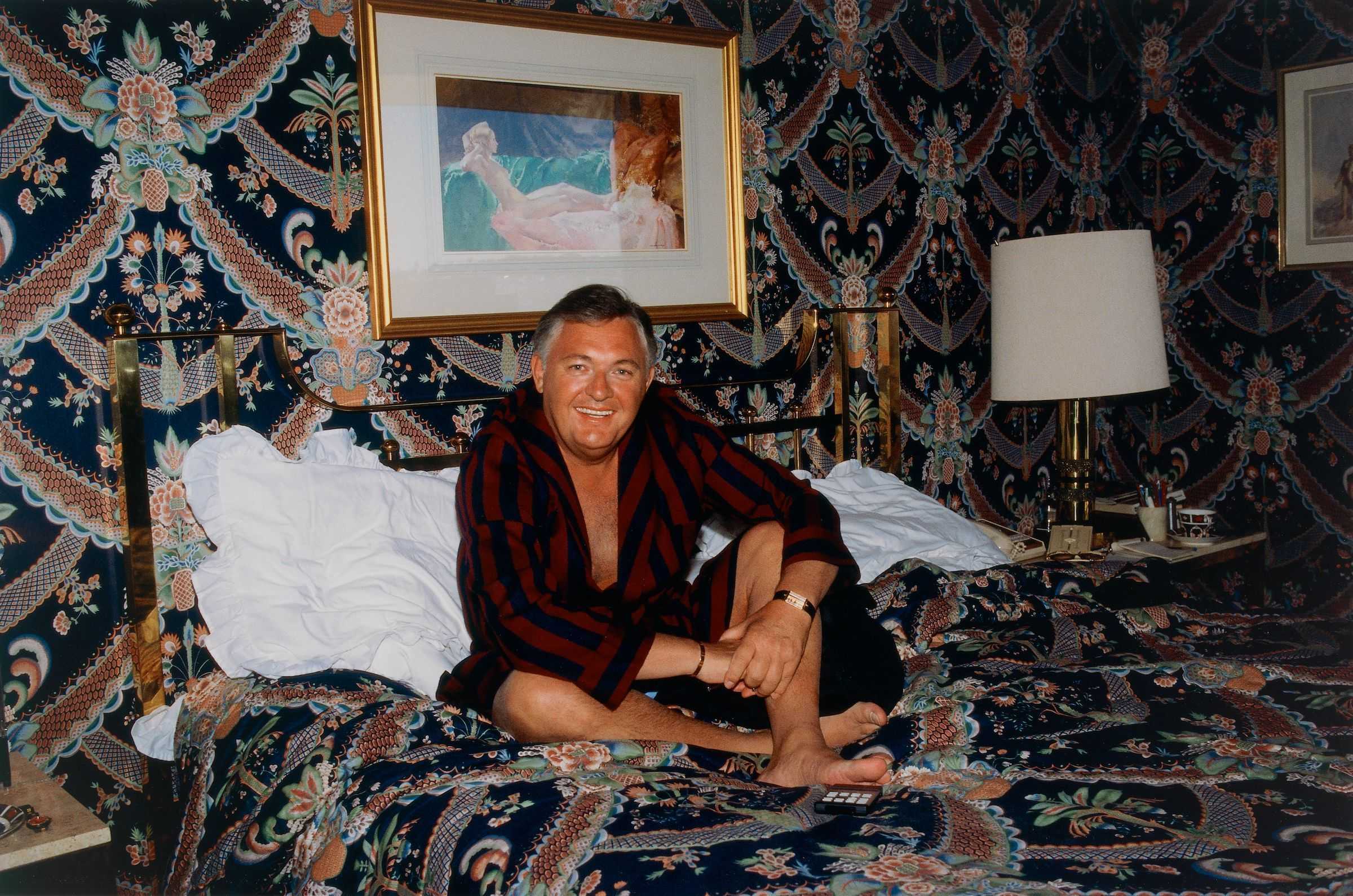Too Much and Never Enough
 |
| Ralph Wolfe Cowan, The Visionary (Donald Trump), 1989. Mar-a-Lago |
"Cheating as a way of life" is the way Mary Trump describes the career of her uncle, the POTUS, in her family tell-all, Too Much and Never Enough. In 1988 Trump cut a hotel deal that bordered on a swindle (as Trump himself boasted) and which tangentially involved van Gogh's painting of Irises. The affair served to demonstrate how much a house of cards the art market is, and it ultimately led to the van Gogh ending up in Los Angeles.
The other principal in the story is beer and media tycoon Alan Bond (1938-2015), a corrupt celebrity businessman who was in many respects the Donald Trump of Australia. Unlike Trump, Bond was an authentic national hero for having bankrolling Australia's 1983 victory in the America's Cup. Four years later, Bond made news for buying "the world's most expensive painting." That was van Gogh's Irises, for which Bond bid an unprecedented $53.9 million at Sotheby's.
Bond was also known to be a high-rolling casino gambler. Trump was then trying to recruit wealthy foreigners to play in his struggling casinos. This led to a 1988 meeting at Trump Plaza, Atlantic City. Trump couldn't coax Bond to the gambling tables, but he offered another venture: New York's venerable St. Mortiz Hotel. Trump owned it and wanted to unload it. He talked Bond into buying the hotel for $180 million. In the course of the negotiation, Bond offered the van Gogh as collateral.
"What would I do with Irises?" Trump reportedly asked. "You know what Irises is? It's a piece of canvas with some paint on it."
Trump later called the St. Mortiz sale "one of the best deals I ever made in my life." He had paid only $72 million for property, more than doubling his money in three years. Trump told associates that Bond did not understand that the hotel was on leased land (something Trump evidently saw no need to disclose). With soaring Manhattan land prices, the hotel operation was becoming progressively less profitable. Said Trump, "I really, really whipped this guy, really took this sucker for some big money."
In the re-telling Trump exaggerated his return on investment by claiming he had bought the St. Mortiz for only $31 million (an exaggeration accepted by The New York Times). "People like Donald and Alan gravitate to each other," the Times quoted one unnamed source.
Bond had omitted some key information as well. As was revealed in October 1989, Sotheby’s had lent Bond $27 million to buy Irises, using the painting itself as collateral. Sothebys was then keeping the painting "in an undisclosed place until Mr. Bond finished paying the remainder of the purchase price." Thus the famous painting Bond that had offered Trump as collateral was mortgaged to the hilt and not even in Bond's possession.
Disclosure of the Sotheby's arrangement threw much of the high-end art market onto the fainting couch. The giddy price Bond paid for Irises had been invoked to prove that art was the perfect investment, rising even as the stock market swooned. "Every painting sold since then has been measured against it," said Alan E. Salz of Didier Aaron.
"Now there is a suspicion that it was a manipulated sale," said David Tunick. "At a time when…people have begun to think of art as a legitimate form of investment, to see that all thrown into a specious gray area—I don't like it."
One of the few dealers with good things to say about the matter was Jeffrey Deitch. He told the Times that "At Citibank for nine years I saw many cases where people used leverage to buy works of art.… A man of that worth can support a loan of that size."
On that point Deitch was quickly proven wrong. As Bond's finances become more precarious, he was soon trying to sell Irises and the St. Mortiz hotel. This raised the prospect of Bond/Sotheby's having to put Irises back on the auction block and taking a loss that would make headlines. Art market pundits dubbed Irises the “Curse of the Outback.” Bond compared himself to another unappreciated genius, Vincent van Gogh.
In March 1990 the Getty Museum unexpectedly announced that it had purchased Irises. As usual the museum did not disclose the price. The L.A. Times cited "art experts in Los Angeles" who estimated a price of $50 to $70 million. It was assumed that Bond got back what he paid (the Getty was rich!) A follow-up Times article cited unnamed sources close to the Getty Museum as saying the sale price was “somewhat less” than Bond's $53.9 million.
The fullest description of the Irises deal I've seen is in Burton Fredericksen's 2015 book, The Burdens of Wealth: Paul Getty and His Museum. Fredericksen, the former Getty paintings curator and deputy director, says the museum bought Irises for $35 million cash and a swap of three lesser Getty paintings to Sotheby's. The trade-ins, including a middling Cézanne landscape, were then assessed at $5.5 million all told. That would make the effective price about $40.5 million, much less than what has been speculated. Bond would have taken a $14 million loss. He presumably made up the difference from the proceeds of an previous sale, that of Manet's La Promenade in November 1989. It went for $17 million in a Sothebys's auction and is now also in a museum, the Tokyo Fuji Art Museum,
It was apparently the Getty that got a sweet deal. Two months after the sale the first version of van Gogh’s Portrait of Dr. Gachet (which the Getty’s curators had decided was less desirable than the larger and extraordinarily well preserved Irises, says Fredericksen) sold for $82.5 million.
Dr. Gachet treated van Gogh for mental illness. His medical skills might have come in handy during Bond's 1992 bankruptcy trials. Bond claimed to be suffering from brain damage that prevented him from answering questions about where all his money had gone. After the bankruptcy hearings, Bond made an immediate and full recovery.
 |
| van Gogh, Portrait of Dr. Gachet, 1890. Private collection |




Comments
They think that forcing an overpriced load of crud upon the people of LA, including its millions who are hard-working and struggling, with platitudes about more diversity and a need to culturally self-flagellate themselves, somehow will make up for a three-card-monte maneuver and a big non-transparent "FU."
No justice, no peace.